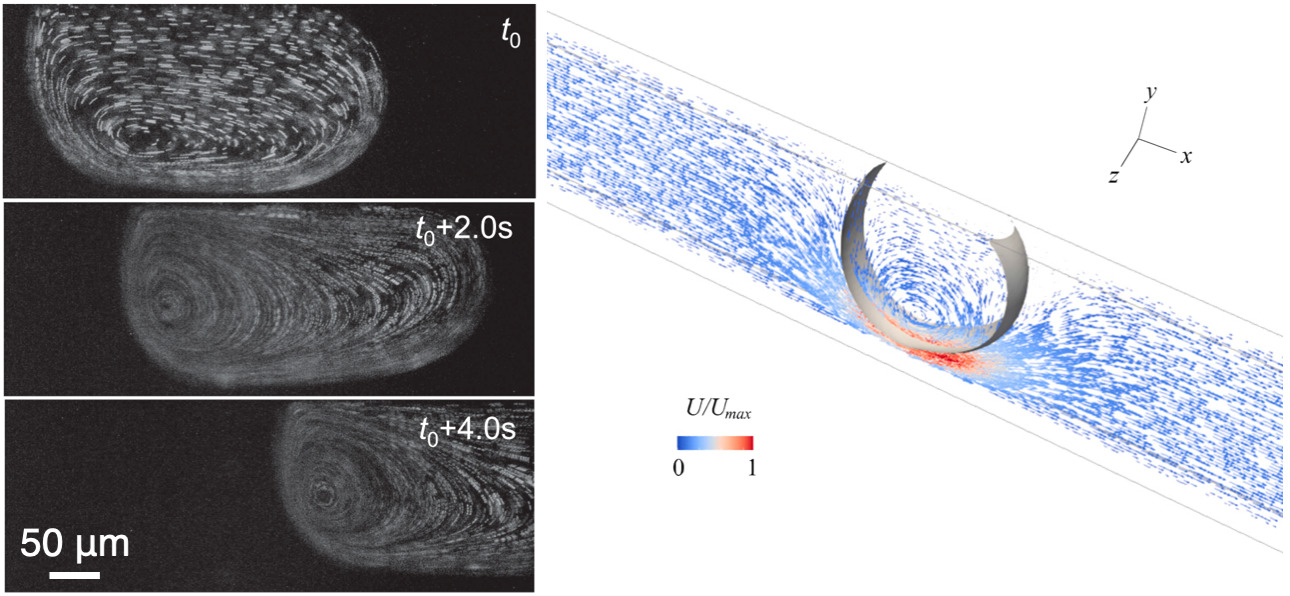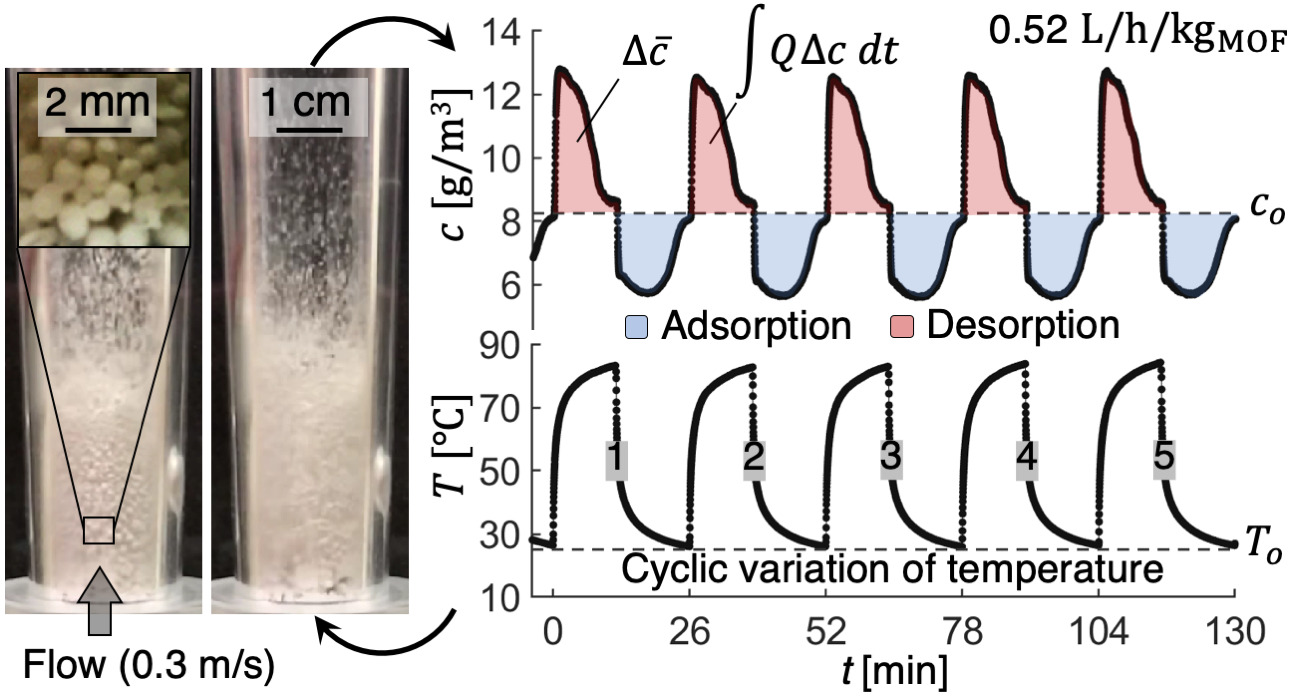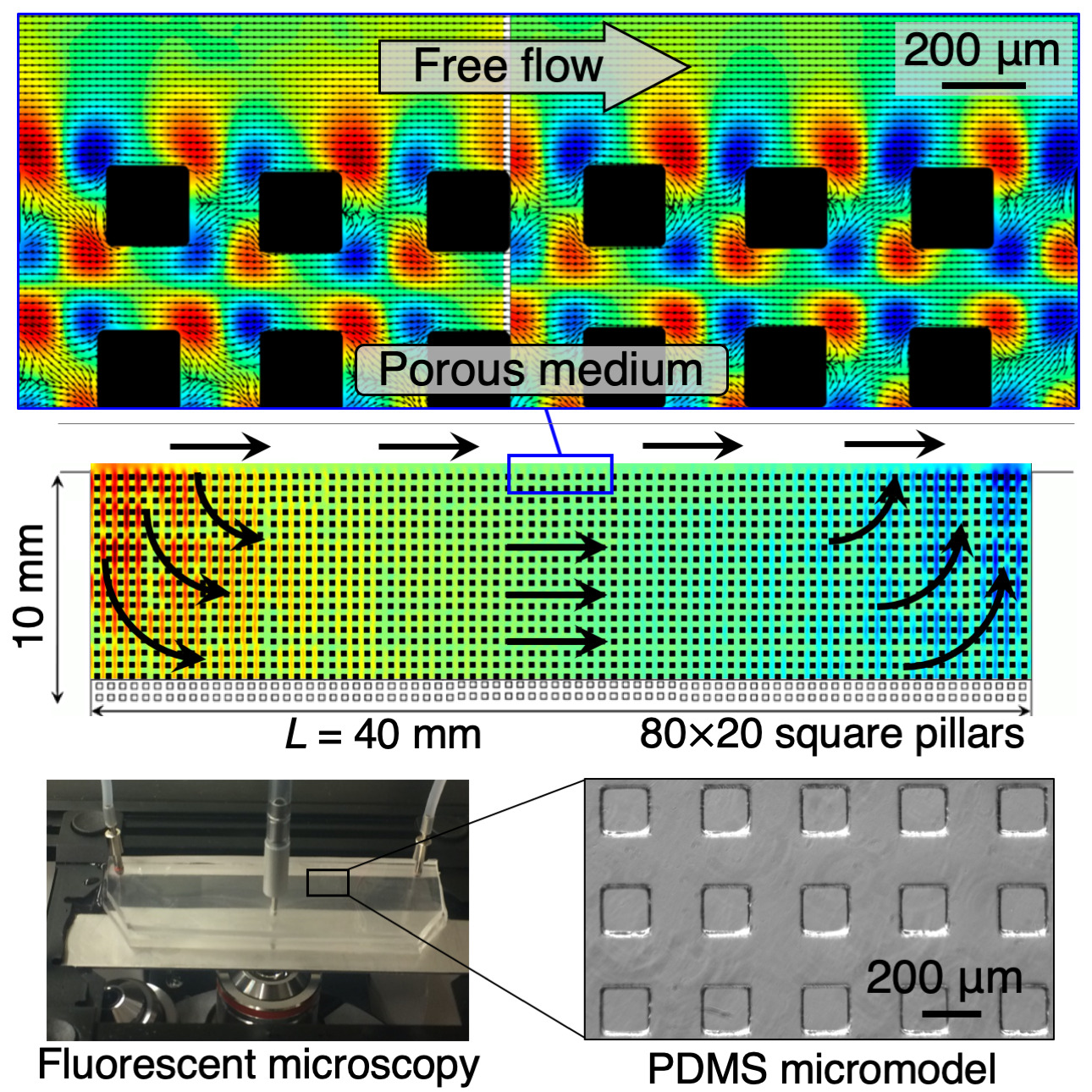Fluid-filled porous media are ubiquitous in many natural and technical processes, and over widely disparate length scales. However, determination of flow and transport (mass, momentum, energy, charge) in porous media systems still remains a challenge. We conduct cutting-edge experimental research to reveal the underlying transport physics at various time- and length-scales, and provide a fundamental understanding on how various types of pore-scale interfaces influence macroscopically multi-field processes, including phase change and reactive transport. Our goal is to establish advanced thermodynamically-based theories for the description of porous media processes as well as of the coupling of porous media flow with other flow domains.
Two-fluid flow dynamics
The macroscopic description of immiscible two-fluid flow in porous media requires accurate knowledge of the discontinuous phase mobilization mechanisms. These are physically controlled by drag forces, capillary forces, friction, pressure differences in the wetting phase or even contact angle hysteresis effects in case of droplet-based microfluidic channels. Using high-speed fluorescent microscopy, our research examines the deformation of entrapped globules, and simultaneously quantifies time-averaged and instantaneous velocity fields during snap-off and mobilization. The goal is to understand how the physical properties of the fluids and the interfacial energies with solid surfaces influence the related transport fluxes.


Free-flow and porous media coupling
An efficient mathematical coupling of free flow and porous media flow depends on the use of appropriate boundary conditions between the two distinct regions. Our research combines a variety of measurement techniques to quantify pore-scale velocity fields and the related heat and mass transfer for a range of conditions. The goal is to grasp fundamentals from the micro-scopic scale upwards, and form the scientific basis for the development of thermodynamically consistent boundary conditions that can be further used in REV or pore-network models. We are particularly interested in turbulent multiphase systems that also involve reactive transport and phase change processes (e.g., evaporation).
Chu et al. 2021, Weishaupt et al. 2020, Yang et al. 2019, Terzis et al. 2019
Fluidization of metal-organic frameworks
Metal-organic frameworks (MOFs) are a class of porous nano-solids with great prospects to support a carbon-neutral energy cycle and applications at the water-energy nexus. However, practical implementations are being severely prevented by a lack of scalable designs that favor mass and heat transport. Our research explores the fluidization of MOFs in their native powder form as a scalable and high-specific-capacity MOF form factor. Fluidization of MOFs results in a very high sorbent-air interface area and small distances over which mass diffusion must occur. This enables high-frequency adsorption-desorption cycling and dramatically increases the specific productivity of the system.
Terzis et al. 2020


